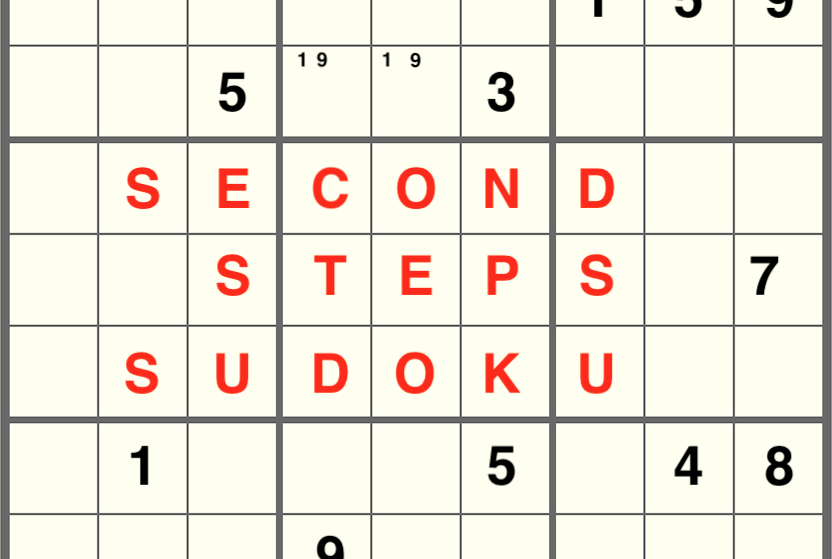The best piece of video content released during this lockdown season wasn’t Tiger King, nor anything on TikTok, nor even Lex, Spraggy and Fintan breaking Twitch records and winning a SCOOP. It was actually a 25-minute video of a middle-aged man sitting in front of a computer screen solving a sudoku puzzle. That’s not an opinion, it’s a fact.
If you’re not among the 1 million people who have seen this video, you need to remedy that situation immediately. It is the most unexpectedly riveting short film released in years. The man is the British puzzler Simon Anthony and he somehow manages to find a solution to a so-called “Miracle Sudoku”, a puzzle in which only two numbers are given to him at the start.
Anthony first thinks he’s being trolled. He then finds his interest piqued. He soon gets into his stride. And he ends up in love. All the time, Anthony is far more seduced by the brilliance of the puzzle’s construction than he is his own abilities to unravel it. The whole thing is just a scintillating, breathtaking trip — and earned attention in the editorial pages of the Guardian, Telegraph and USA Today, among others.
Watch Simon Anthony unravel the Miracle Sudoku
Sudoku has now been a fixture in newspapers for more than a decade and most people have probably decided where they stand with respect to the puzzles — sometimes totally uninterested, sometimes completely addicted. But if you’re somewhere in between — maybe the kind of person who will do a sudoku while bored on a plane, or will sometimes have a crack at a “mild” or “easy” designation, while carving a frustrated cross through anything more difficult — then you should spend some more time watching the Cracking The Cryptic YouTube channel, which Anthony co-hosts with fellow puzzler Mark Goodliffe. (Goodliffe is the reigning UK sudoku champion, and is also Britain’s best crossword solver.)
It quickly becomes apparent that there’s great skill involved with solving sudoku puzzles — a level of logical thinking that can initially seem furiously complex, but which can be broken down into a number of simple steps. It depends on analysing patterns and applying learned concepts, all of which are patiently explained by Anthony and Goodliffe in their hundreds of videos on the subject. There’s a real beauty to it too. Watching either of these masters unpick a “super fiendish” or “diabolical” puzzle is often elevated to something approaching art.
Our occasional “Second Steps” series looks at a popular pursuit — we’ve looked at Scrabble and Monopoly before — and attempts to move a player’s knowledge and strategy on from a basic understanding. Thanks to a lockdown diet of Cracking The Cryptic videos, we feel in a position now to do the same with sudoku.
So without further ado, here are a few tips on how to improve your sudoku skills. Or, in the words of Anthony and Goodliffe, “let’s get cracking”.
(Note: we’re looking only at what’s called “classic” sudoku, ie. a 9×9 grid, divided into nine 3×3 boxes, with the requirement that the digits 1-9 appear once and only once in each box, row and column.)
1. LEARN AND APPLY SNYDER NOTATION
At the beginning of most classic sudoku puzzles, all players will likely be able to spot a few places in which they can immediately position a digit. Go ahead and fill those in. That’s how everyone starts. But during this process, you’ll probably also notice that there are a few instances where a digit can go in one of two boxes. It’s not quite enough to go ahead and write anything down permanently, but it’s useful information that you’ll likely be able to use later.
Some people use a pencil to write the “candidate” digits in the box, reserving the pen for when the correct answer is confirmed. Others write the candidates in tiny text in a corner of the box. In most of the sudoku software on newspaper websites, there is the option to add these “pencil marks” too.


Correct Snyder notation at red arrows; incorrect in yellow circle
So far, so good, but it’s worth now learning to employ what’s known as “Snyder notation” — named after three-time World Sudoku champion Thomas Snyder. Snyder uses these pencil marks, but applies a key restriction: you only write in a pencil mark if a number can go in exactly two positions within a 3×3 box.
You might be tempted to write in some pencil marks if you know the correct digit is one of three candidates. Don’t. Leave it blank. Similarly, you might look at a square and realise that only three digits could possibly go in it, and be tempted to fill those three in. Again, don’t. As Anthony explains in one of Cracking The Cryptics earliest videos: “In every 3×3 box, I’m only allowed to make pencil marks if a number can only go in exactly two positions in the 3×3 box. They are the only pencil marks I’m going to allow myself to make.”
The advantage of this self-imposed restriction is that when one square is eliminated as an option, you immediately know for certain where the digit now goes. When you have a grid scattered with accurate Snyder notation and one digit is confirmed in a specific square, you can often then fill in a long sequence of squares all leading from this single piece of information.
See how it works from 10:49 in the video below:
This is incredibly powerful. In fact, Anthony says: “It’s very rare you need to go further than this basic pencil-mark technique. Indeed, this method, if you become proficient at it, should take you through any level of competitive sudoku. You can go to the world championship, and if you’re a master of this method, you can be competitive.”
2. DIFFERENT CIRCUMSTANCES, DIFFERENT NOTATION
Frequently, your logical deductions will also lead you to the knowledge that an individual box can contain one of only two digits. It might be that you have only two vacant squares remaining in a 3×3 box (or in a row or a column) meaning you’re able to reduce the candidates specifically to two numbers.
It’s similarly useful to be able to mark in those two candidates, but in a way that differentiates these pencil marks from those of the Snyder notation (which, remember, we use only when a digit can go in one of two locations). In the Cracking the Cryptic app, which is aimed at advanced solvers (or aspirational beginners), it’s possible to notate in two different ways: placing small digits into the centre of the square if one knows that they are locked there (see red arrow), as opposed to placing them in the corner, as per Snyder notation (in yellow ring).


Find a way to differentiate between two types of notation
Though this functionality is not possible in all sudoku software, and certainly not for people doing the puzzles with pen and paper, it’s still very important to be able to differentiate these two types of markings. Anthony and Goodliffe suggest using either a different coloured pencil, or getting good at writing in small digits in the boxes, so that you can introduce this differentiation.
It may seem unnecessarily fiddly, but it’s worth the time it takes to get this notation correct. It allows you to unravel puzzles very quickly and accurately as soon as your logic leads you to one key number. It can often feel as though the removal of a single blockage can suddenly release a torrent of correct answers.
Pairs and triples: When you’re able to identify two squares that can contain the same two digits only, this is called a pair. Whether or not you’re able to resolve the problem of which square houses which number, these pairs often become very important to solving the puzzle as a whole. When you can identify three such square/digit combinations, that’s a triple and is similarly valuable. (Sometimes quadruples even exist.)
THE PRINCIPLE OF UNIQUENESS
A proper sudoku puzzle only has one solution — ie, there’s only one way in which the nine numbers can fit together into the grid without breaking any of the rules. On some occasions, the knowledge that the puzzle is unique can be crucial in finding a breakthrough to a particular impasse. How so? Allow Simon Anthony to explain (from 6:22):
To repeat and paraphrase: the principle of uniqueness becomes important if you find four squares that might well contain the same two candidate digits, mirroring each other across two 3×3 boxes. In the diagram, of a nearly-completed puzzle, there is a pencil-marked 2/3 pair in the green squares, with the yellow squares, on the same rows, potentially also containing a 2/3 pair — at least based on the information we currently have. However, if the solver wrote the 2/3 pair into the yellow squares, he is essentially suggesting the puzzle can have two solutions. If all the yellow and green boxes contained a 2/3 pair, then it wouldn’t matter in which order those digits appeared in the completed puzzle.


The principle of uniqueness can help you past some obstacles
But that’s not possible. A proper sudoku puzzle can’t have two solutions. That means that the solver is able to jump the gun and place a 3 into the blue circled square. It’s the only other empty square in that 3×3 box, so it must contain a 3 because we can’t place a three in either of the yellow squares. As always, watch the video and hear Anthony explain it.
Two other quick points here: firstly, most puzzles can be solved without relying on the principle of uniqueness. Sudoku solvers are divided on whether or not its a legitimate technique because it doesn’t depend specifically on the puzzle’s internal logic. But since Anthony and Goodliffe use it, it’s good enough for us. Secondly, it’s also probably important to note that some poorly-constructed sudokus, most likely those churned out by computer to go in massive compendiums, might be flawed in that they allow two solutions. But that’s the equivalent of a misdeal. Those puzzles aren’t worth the solving.
X-WINGS
Finding what’s known as an “X-Wing” in a sudoku puzzle is probably officially an advanced technique. There are plenty of high difficulty-level puzzles that can be solved without the use of an X-Wing. That said, X-Wings are great because they’re also really easy to figure out. The logic behind them is straightforward and the benefits are often immediate.
The term gets it name from a particular arrangement of pencil marks in a grid, specifically when the same digit is locked into the same two positions in two separate columns. Look at columns two and seven in the grid below. Our working so far, in addition to the given digits, means that the 8 in each of these columns can appear only in either row 1 or row 8 — the cells highlighted in green, and indicated by the letters A-D. If one drew a line from diagonal to diagonal, it would form an X, hence the name.


A classic X-Wing in a fiendish sudoku
So what’s so important about this? Well, simple logic tells us that the digit in question — an 8 in this example — will appear at the opposite corners of the X. No two digits can be the same in a single row or column, so if there’s an 8 at position A, there can’t be one at either B or C. It must be in D. Likewise, if there’s an 8 at position B, there can’t be one at A or D.
Furthermore, because there must be an 8 in either one of these pairs of boxes — it must be in either A and D OR B and C — there can’t be an 8 in any other positions in rows 1 and 8 or columns 2 and 7.
Whether or not we know at this point where the 8 is actually going, we know where it CANNOT be. It cannot be in any other square along those files. Therefore the X-Wing has the potential to clear out a lot of pencil marks — and by doing so can ink in other candidate digits. In the diagram, the pencil-marked 8 in the blue circle needs to be removed. The X-Wing tells us that an 8 cannot be in that square. And once that’s removed, it forces the 8 into the square above it, which in turn forces the four into the square to its left.
Anthony solves this puzzle in one of Cracking The Cryptic’s earliest videos, with the discussion of the X-Wing starting at the 5:27 time mark in the video below.
SMALL, GENERAL TIPS
Look for the congested rows, columns or boxes: After filling in all the obvious cells at the start of a puzzle, it makes sense to focus your attention on the boxes, columns or rows that are already quite full. “It stands to reason that those are the boxes where you’re going to find the most restrictions and therefore find the most help,” Anthony says. In other words, the empty squares will be much more restricted than elsewhere on the grid, and you can often use a process of elimination to place a digit — known as a “naked single” — in boxes. Take a look at the empty squares one by one and figure out what number might be able to fit in it. Sometimes there’s only one, in which case in can be written straight in. Sometimes, maybe only two could legitimately fill the square, in which case pencil mark it.
Focus on the scarcity: Often, particularly in the most difficult puzzles, you will find one or two digits extremely under-represented in a grid. There might be only one incidence of a particular digit, for example. That’s going to mean that at the start of the solve, that digit will be a legitimate candidate for almost all squares on the grid. It makes sense, therefore, that in order to make some early progress, look at the boxes, rows or columns in which this scarce digit does appear. There’s going to be enough difficulty in placing it across the rest of the empty board, so do whatever you can at the beginning to reduce the impact of this scarcity.
Follow up a pen or pencil mark: When you place a digit, or even place nothing more than a pencil mark, be sure to see what is its knock-on effect. It’s tempting, particularly if you can see two or three moves unravelling ahead, to race forward and place all the immediately obvious digits. But don’t forget to return and examine the implications of every previous mark. You may end up spotting where other digits or pencil marks can go too, possibly in a previously unexpected direction.
The power of three: Three digits next to each other in a box are very powerful. Obviously they block the specific squares in which they are found, but they also force restrictions onto the blocks either side of them. Those three digits will fill three of only six available squares in the boxes either side, and it’s often possible to at least pencil mark some digits almost immediately when we see three together.
It’s worth noting at this point that there are many, many more advanced techniques, and many, many more variants of sudoku on which to use them. The world of skyscrapers and swordfishes, sandwiches and killers will have to wait for the Third or Fourth Steps series, for which there is no known launch date. However, Anthony and Goodliffe solve some of the very toughest classic sudokus using nothing but their experience, their pattern-identification skills and the techniques listed above. And so can you.
Back to Top







